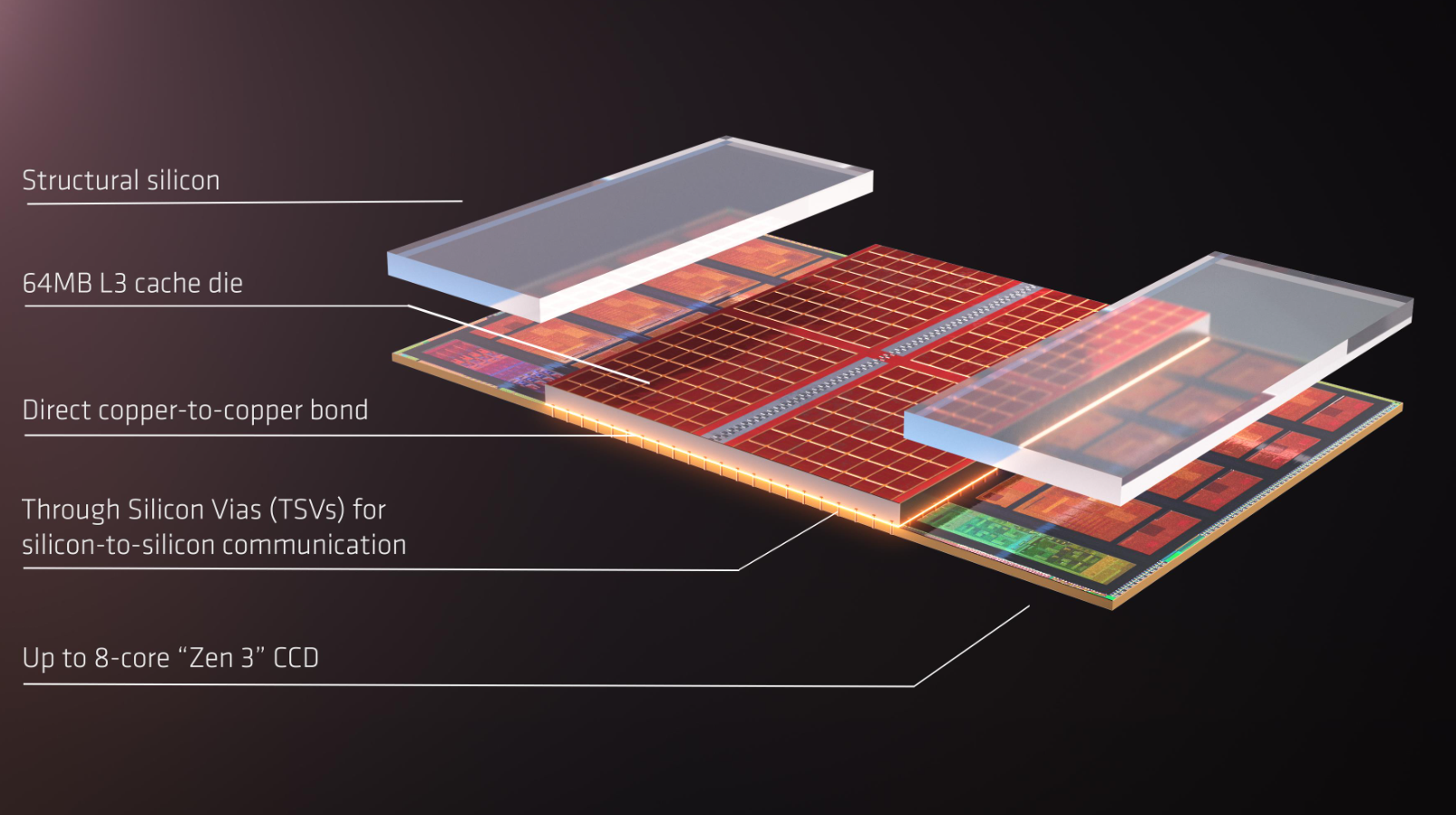AMD had a packed keynote at Computex 2021 this week in Taiwan, announcing new Ryzen Pro 5000 processors, FidelityFX Super Resolution technology, and new Radeon 6000M mobile graphics. But its new APUs and cache memory stacking technology are what caught the spotlight.
New APUs, not just for OEMs this time
AMD announced two new desktop APUs at Computex 2021 for compact gaming systems and productivity PCs.
First announced in April, the 8-core Ryzen 7 5700G and 6-core Ryzen 5 5600G will sell for US$359 and US$259 respectively on Aug. 5 for consumers and OEMs alike.
Many AMD users have been asking for higher-end AMD processors to include integrated graphics once again. Although they’re often seen as a secondary choice to a dedicated graphics card, integrated graphics have once again become popular due to the constrained GPU supply caused by the semiconductor shortage.
But even without the GPU craze, high-performance integrated graphics still have a place among the heart of small form factor PC builders. Omitting a discrete graphics card can dramatically reduce the footprint of the PC, making APUs a prime choice for compact home entertainment PCs, office PCs, or a console-like gaming box.

The AMD Ryzen 7 5700G and AMD Ryzen 5 5600G APUs feature eight and six cores. Compared to the CPU-only Ryzen 7 5800X and Ryzen 5 5600X, the APUs have much lower TDP, capped at just 65W instead of 105W.
Another big difference is the cache size. Both APUs offer 16MB of L3 cache, half that of the CPUs.
On the graphics front, the Ryzen 7 5700G carries eight graphics cores while the Ryzen 5 5600G has 7. They’re clocked at 2 GHz and 1.9 GHz, respectively. While the new APUs still use the old AMD Vega 8 graphics microarchitecture, it’s now built with the same 7nm transistors as the Zen 3 CPU cores. Switching to a smaller transistor increases power efficiency and enables AMD to increase its clock speed to improve performance.

All of the new CPUs announced at Computex 2021 include an AMD Wraith Stealth cooler in the box to save customers money on a separate APU cooler.
192MB of L3 cache on an enthusiast processor? Yes, please!
In addition to the processors, AMD also showed off its new 3D V-cache.
AMD says that by vertically bonding a layer of memory on top of the CPU’s compute die, it can add an extra 64MB of cache per die. This means that every compute die can potentially offer up to 96MB of L3 cache.

Since AMD Ryzen processors are made by linking multiple compute dies together, high-end processors can have multiples of that cache. In addition to massively increasing capacity, AMD also says that the cache size has a throughput of up to 2TB/s. If all the claims hold, then 3D V-Cache could greatly benefit integrated graphics since they depend more on throughput rather than latency.
Speaking of latency, AMD did not describe how 3D V-Cache’s latency compares against the built-in cache.

The best news is that 3D V-Cache is almost here. During the keynote, AMD CEO Lisa Su showed that a Ryzen 9 5900X CPU equipped with 3D V-Cache is four to 25 per cent faster in games than the same CPU without the technology.
